|
Hey Everyone! Tasha here. This will be a continuation of the previous post discussing common questions or concerns about the massage environment and other helpful information. Let's jump right in! Q: Should I talk during the massage? A: There will be some level of communication that does need to happen. This would include letting the therapist know if the pressure, table heat, music volume, or other controllable aspects to the service are at the level that works for you. They also may need to ask for specific feedback for a stretch or certain treatment to make sure it is achieving the right results. However, you are not required or expected to chit chat with your massage therapist the entire time. You are in charge of the level of discussion and can at any time request that it end or start it back up. Also, be aware that it can be uncomfortable or even inappropriate to ask your massage therapist personal questions and they can choose not to answer or even to end the session early if they feel harassed in any way. Q: What if I forgot or don't have time to shave? A: Nothing to worry about at all! Shaving or not shaving does not affect the massage or bother the massage therapist in any way. Once the lotion or oil is applied the level of hair in an area is not an issue. Massage therapists work on all types of bodies- short or tall, male or female, shaved or unshaved. Feel free to let go of the stress and enjoy your treatment! Q: What body parts will not be massaged? A: There are actually three categories of answers to this question. The first would involve the areas that are never worked and are illegal (against the law for a licensed massage therapist to work). In this case, the areas that would never be included in a massage are breast tissue, genitalia, and the anus. The second category includes areas that would be contraindicated (unadvisable to treat with massage therapy). These would be areas such as the front of the neck, front of the elbows, back of the knees where there are vulnerable blood vessels and arteries. There are also certain areas specific to an individual that may fall into this category such as burns, deep cuts, recent blood clots, or anything contagious. The third category would be areas that permission or request may be needed beforehand which may include the face, abdomen, upper pec, scalp, or muscles accessed by the armpit. Such areas are okay to some and not to others so they tend to be included on a case by case basis or by request. Q: How often should I get a massage?
A: It depends on your goals and priorities! If massage is something you do to de-stress and relax then you can schedule one as often as your time and finances allow. If it is a routine you have for general health and maintenance, then it seems that every 4-6 weeks is a good timeframe for most. However if you have a chronic issue that is a priority for you to resolve to have the quality of life you desire, then you may consider every 1-2 weeks until the physical concern diminishes to a maintenance level. If you are not sure which option is best for your situation communicate with your massage therapist to come up with a plan customized to your needs. Q: How much should I tip? A: While a tip is not required, it is a part of the culture in the massage environment in the united states and generally expected if the service was good. It is your opportunity to show appreciation for the excellent work your massage therapist provided at the level you are able. A typical rule of thumb for gratuity in the service industry is around 20% of the service cost. If you have a question, ask! If you have a concern, speak up! In 95% of cases when someone is disappointed or frustrated with how a massage session went, it could have been avoided with better communication. Until next time, may you have the highest quality of life possible! Tasha Ouderkirk, LMT, Business Owner
0 Comments
Hey Everyone! Tasha here. I find that there seems to be a bit of mystery about the massage environment for the general public. I guess it may be because of the privacy involved in the situation. This can make it a little overwhelming or nerve wracking for someone who is coming in for their first massage ever or for someone getting a massage at a new location they haven't been to before. I thought I might answer a few commonly asked questions to hopefully bring some comfort and guidance to people in those categories. Q: How do I prepare for a massage? A: The first thing to consider to be prepared is to know where you will be going! Be aware of how long it will take you to get there and plan to arrive early. Being early will allow you the time to navigate unforeseen traffic issues, fill out any required forms, use the restroom, or rest for a few minutes so you don't begin your session in a rush. In the massage environment, your scheduled appointment time is when you are expected to be available and getting on the table. If you are late, it typically means your hands-on massage time will be a bit shorter. Second, you may want to consider your hygiene. Some people can stay 'shower fresh' all day and some people can't. That's okay, do your best! The therapist will do their best to have appropriate hygiene to be in your personal space and appreciate the same respect in return. The third thing to consider would be your beverage choices. Drinking water beforehand and after will help your body do it's job better. Be cautious about caffeine or sugary drinks that may interfere with your experience trying to relax. On that note, I would also recommend using the restroom before your session to feel the most comfortable. Fourth, know what goals you have for the session and be ready to communicate them. The massage therapist will ask you what you want and will do their best to accommodate that but they cannot read your mind. If you just want to relax, tell them. If you want to focus on one or two areas causing you trouble, tell them. If you want a full body session, tell them. If you want deep pressure, tell them. The more you communicate the closer they will be able to get to your expectation. Q: Do I take all of my clothes off? A: Short answer, no one will ever make you undress to a level that makes you uncomfortable! Long answer, the therapist wants to respect your boundaries and also help you with the goals of your massage. If you say you want back and neck work but leave on a sports bra, they will have to do their best to navigate how to work the muscles well while also not making you feel uncomfortable. If you say you have low back pain and agree to glute or hip work but leave your underwear on, this will limit the options the therapist has to be able to effectively work those areas. If you need your feet worked well but don't remove your socks, you may be disappointed with how the therapist has to navigate the massaging of your feet. The same principle also applies to jewelry, watches, and some hair styles. While you can absolutely leave on anything and everything that you wish, realize that it may change what the therapist is capable of helping you with for that session. If you do decide to remove all items of clothing (which is most common), you will be covered with the sheet and blanket on any area that the therapist isn't currently working and genitalia/breast tissue is NEVER uncovered. Q: Will it hurt?
A: There are actually a few factors that will affect the sensation of your experience receiving a massage. One that is common is miscommunication or lack of proper communication. Maybe you told the massage therapist that you want medium pressure, that is a great place to start the communication. The issue with this is that pressure is subjective! 'Medium' pressure will mean something different to each client and each massage therapist. The therapist will do their best to give you what they believe is medium pressure but you will need to communicate further and let them know if you want more or less pressure to get to the level of pressure that you would like. Another factor to consider is what you want to achieve with your appointment. Did you just want to relax? It this case the massage should probably not hurt to receive. However, if you want to find relief from pain, like headaches, to be able to help you with that goal the massage therapist may need to work on some tight, stuck, or knotted muscle areas to do that. This may hurt somewhat, but will not harm you in any way and may be worth short term discomfort for the long term benefits. Finally, a factor that could add to the sensitivity of the massage is the level of health you are at. If you have a chronic amount of muscle tension or inflammation in your body, or a condition such as fibromyalgia, you may be much more sensitive to touch than average. In this case, sometimes even what would typically be considered light pressure may be painful. I would suggest pondering if you want to prioritize comfort or potential results and communicating with the massage therapist during the appointment if you don't feel like you are on the same page at any time. After all, it is your massage and the massage therapist is there to help you. Hope this helps you get the most out of your massage therapy and the communication of your goals. Until next time, may you have the highest quality of life possible! Tasha Ouderkirk, LMT, Business Owner Hey Everyone! Tasha here. We love anatomy and learning about our bodies and how they function! Did you know there are around 650 muscles in your body? The muscles have 3 main functions: they provide our bodies with movement, support the organs, and help regulate body temperature. Our muscles are very vulnerable to damage from impact injuries, inactivity, overuse, or even from regular repetitive use and daily wear and tear. However, the muscles often get overlooked as a major source of physical pain and dysfunction! The good news is that almost every time this pain can be lessened or often completely resolved through proper massage techniques such as trigger point, injury, or myofascial bodywork. When muscles are healthy they should stretch, contract and receive proper signals from the nervous system. Healthy muscle also has a consistent texture, good range of motion, and is not tender to the touch. When muscles are unhealthy they will be stuck short or stuck long and not activate or respond properly to nerve signals. Unhealthy muscles will have inconsistent ropey, knotted, or gritty textures, low mobility and be sensitive to pressure. Unhealthy muscle areas will not have proper blood flow or lymphatic drainage and a buildup of lactic acid can occur. This is when trigger points thrive and become a source for pain and restricted movement! Trigger points can be active or inactive and they have specific patterns called referral areas that pain or sensation will travel along. When trigger points are inactive, they will limit movement and cause other problems but you will feel tenderness or sensitivity in the referral area only while the trigger point is being worked on. When the trigger points are active, you will have constant sensation or pain in the referral area typically described as deep, dull and aching pain as well as limited movement.
The reality is pretty much everyone has trigger points, you can't really escape it (although, not everyone has trigger points that are active). However getting trigger point, injury, or myofascial massage by a skilled massage therapist can actually eliminate trigger points and your aches and pains! Receiving this type of work can be uncomfortable or possibly painful during the session but it is not harmful and the rewards are the pain-free days, weeks, and months afterward. We love working on trigger points! We have seen trigger point massage techniques significantly improve the lives of our clients by getting rid of the pain that nothing else could or giving them back the movement and lifestyle they need and the life they deserve. Give it a try for yourself! Until next time, may you have the highest quality of life possible! Tasha Ouderkirk, LMT, Business Owner Hello Everyone! Tasha here. I'm going to dive into a topic we haven't discussed here yet. Have you heard of Float Therapy? While we do not offer floating at this office, we do at our clinic location, Body Balance Massage and Float in American Fork and you need to try it! "Floating takes your brain out of the chaos society has created and places it into it's natural state of peace and stress-free harmony." -The Float Tank Cure A good float session has so many benefits. Float therapy is ideal for achieving a state of calm, reducing stress, and improving overall physical, mental, and emotional health. "Floating should be a staple for anyone seeking a calmer and more peaceful life." -The Float Tank Cure The idea is that our body and brain are completely overwhelmed with constant stimulation from sight, sound, and touch 24/7 and need a break! The specific design of the float environment is a unique opportunity to be weightless, have no distinction between your skin and the water, ideally no light and no sound to give your nervous system a complete rest. This allows your body to fully rest and heal deeply. It is so simple but so profound at the same time. "90% of the central nervous system's workload is related to gravity, light, sound, and touch."-The Float Tank Cure At Body Balance Massage and Float our six foot by eight foot float pools are filled with about 10 inches of water heated to skin temperature and filled with around 1,000 pounds of Epsom salt magnesium sulfate. The room has the potential to be completely dark and quiet, although you can leave on some lights and request music. It is SUPER clean. No amount of bacteria could survive that amount of salt, but in addition to the salinity, the water goes through a UV light treatment and gets shocked with high strength hydrogen peroxide every hour. The room is cleaned, sanitized and stocked with fresh linens between each appointment and at the beginning and end of every day. The most common float length is for one hour but we do offer 30, 60, 90, and 120 minute sessions. For someone who is floating for the first time, I like to recommend the hour because it is long enough in case it takes you a while to settle in and get into a groove but not so long that you get too anxious or need a restroom break. "To keep the body in good health is a duty...otherwise we shall not be able to keep our mind strong and clear."-Buddha Besides the lack of sensory stimulation, there are also huge benefits from the high concentration of magnesium from the Epsom salt in the water! Our bodies use vitamins and minerals for all of our daily functions and magnesium is one of the main minerals it likes to use. The most effective way to get a good boost of high quality magnesium is by absorbing it through the skin straight into your body, which is exactly what happens when you float! Some of the things magnesium helps with are: digestion, blood pressure, mental health, inflammation, headaches, muscle tension, cramping, spasms, sleep, athletic performance, arthritis, fibromyalgia, autism, concussion recovery, chronic pain, and so much more! "I truly believe that floating might prove to be a universal pain reliever; one with no negative side effects and with benefits far beyond physical well-being."-The Float Tank Cure How often should you float? While floating is completely safe as a daily routine, that isn't practical for most of us. How regularly you do it would ultimately depend on what your goals are that you want to achieve through floating and what you choose to value and prioritize in your life. Here is what Shane Stott, the author of The Float Tank Cure says about it- "My recommendation: Shoot for a strong habit of floating even if it's only once a month. Stick to it until it's part of your routine, and you're comfortable with it. Don't let up until it's a part of your regular life. Even with a slow, monthly habit you will start to see results and you will likely notice your life begin to improve. This will fuel a frequent float habit and will give you the best odds of gaining all the benefits of floating." "The more you float, the more benefits you unlock."- The Float Tank Cure I have come to truly love a good float session and I encourage you to add it to your health care routine and see what benefits you can discover for yourself! Until next time, may you have the highest quality of life possible! Tasha Ouderkirk, LMT, Business Owner If you're a resident of American Fork, you know just how stressful life can be. Between balancing work and family responsibilities, finding time for self-care is difficult. That's where Paul & Tasha Massage comes in. Our team of licensed massage therapists wants to help you relax, de-stress, and relieve muscle tension. We welcome you to learn more about how we can alleviate pain and discomfort naturally. Paul And Tasha's Experience Helps ClientsPaul and Tasha are a professional team who helps people from all walks of life reduce their stress and treat chronic pain. Paul has mastered the art of trigger point therapy, which can relieve tension and soreness in hard-to-reach areas of the body. He can also help if you're looking for rehabilitation or strengthening exercises. Tasha is highly skilled across many massage modalities, meaning you'll be able to find a service that works for your individual needs. Whether you need deep tissue work, relaxation massage, or sports therapy, you can trust that Tasha will be able to help. Custom Massage Services In Pleasant GroveAt Paul and Tasha Massage, we provide various restorative massage practices that help our clients achieve optimal health. Our services include the following:
Benefits Of Regular Massage TherapyIn a culture where medications are often prescribed instead of other forms of treatment, it's important to remember the benefits of regular massage therapy. First, you'll experience a natural and non-invasive way to treat your injuries. You'll have a sense of well-being from relieving pain and inflammation, increased flexibility, improved circulation, and reduced stress. If you've been suffering from symptoms like chronic pain and headaches, or need to recover from an injury, our services can help transform your life. We listen to the needs of our clients from the initial consultation and cater to your specific needs. Learn More About Paul & Tasha Massage Serving American Fork, UtahIt can become challenging to enjoy your life with constant pain. We want to give our clients the solution they've been searching for. For more than a decade, Paul & Tasha Massage has been helping people in American Fork achieve optimal health and wellness. If you want to start feeling better and live your best life possible, don’t hesitate to book your appointment today!
Hello everyone! Tasha here. We've made several changes in our business life lately that has had many of you asking a lot of questions! I think it may be helpful to discuss some of it here to ease the curiosity.
First of all, we want to thank those of you who have been interested enough in how we're doing for your caring spirit! We have many clients, family, friends, and employees who are so loving and supportive of us and we really appreciate it. A little background about Paul and I, we both have been massage therapists since 2010/2011 and met through our careers in massage. After we got married we started a business in 2016 out of our home and called it Paul and Tasha Massage. For various reasons (lack of good retirement options as a massage therapist couple, lack of quality options for employment in the massage industry, a general excitement for entrepreneurial pursuits and business opportunities, etc.) we started working to start a massage clinic from scratch. I know, a little crazy! Together we opened our clinic, Body Balance Massage and Float in 2019 in American Fork. Our intention and goal from the start was to create a place for other massage therapist to be able to thrive in their career. Ultimately, we want for it to be a business that runs on it's own, not to be 'self-employed' as massage therapists forever. Over the last couple of years we have worked many hours doing massage, reception, management, maintenance, trainings, meetings, late nights, early mornings, and much more to keep working towards that vision. That brings us to September 2022, when we felt like it was time to transition out of the clinic to see how it does on it's own, and back to our private practice, Paul and Tasha Massage. Next month in 2023, I will be officially separated from the clinic and solely working out of our new single office in Pleasant Grove. In January, Paul will be working the majority of his week at our office and just a couple of shifts at our clinic. This new office is just us, back to our original business but with everything we have learned and the many ways we have grown personally and in our massage skills along the way. Moving forward our goals are to start our family, retire, travel, and have more businesses! We are both passionate and interested in ALL topics relating to health and wellness. We continue to research and learn about health and massage in order to most effectively help those we work with. We enjoy travel, food and nutrition, entrepreneurship, and our cat Wasabi. Until next time, may you have the highest quality of life possible! Tasha Ouderkirk, LMT, Business Owner Welcome to Paul & Tasha Massage, where we strive to provide the highest quality massage services in Pleasant Grove, Utah. We understand that your body deserves premium care, which is why our team of experienced and trained professionals provides massage therapy tailored to each individual's needs. Our goal is to create a relaxing experience while helping you achieve your desired positive results through communication, understanding, and deep therapeutic touch. Learn more about how we can help you live comfortably and efficiently by connecting with us today. Massage Services For Different NeedsOur massage therapy services meet the needs of everyone, regardless of age or background. Whether you're a professional athlete or just looking to relieve the aches and pains of everyday life, we have a massage treatment to help you feel better. Some of our popular services include the following. Sports MassageSports massage therapy is a specialized variety of massage that caters to athletes to prevent and manage injuries caused by physical exertion. Paul & Tasha Massage use targeted therapies to improve performance, increase mobility, reduce fatigue, and expedite athlete recovery time. For athletes in Pleasant Grove, this can help them stay on top of their game with an improved range of motion and enhanced muscular strength to keep them competitive during hard-core training. Sports massage doesn't only alleviate muscle pain and tightness. It can provide unique psychological benefits like stress relief and increased positivity, further enhancing their athletic potential. Trigger Point TherapyTrigger point therapy, or injury massage as it is also known, offers relief for those enduring chronic and acute pain. Not only can it reduce your headaches and muscle tension, but it also increases your range of motion. As a result, it makes it an excellent tool for relaxation. Massage can release a trigger point by facilitating circulation and flushing out toxins. This reduces discomfort by drawing extra oxygen and prompting muscles to relax. Gua Sha MassageThrough gua sha, our massage professional utilizes short and long strokes to rub your skin to promote the microcirculation of soft tissue beneath it. This process helps boost blood flow throughout the body. Gua sha is a remarkable remedy for reducing inflammation, making it an ideal choice to treat debilitating conditions like fibromyalgia and arthritis and more temporary muscular and joint aches. Cupping TherapyDating back to ancient times, cupping therapy is another popular technique used to relieve pain and improve function. The ancient Chinese were the first to use cupping, but other cultures, such as Egypt, Greece, and Turkey, soon adopted it. This process utilizes small glass cups placed on your skin with suction. It can help increase blood flow, speed recovery time, and alleviate pain. If you're unsure what massage service will work best for you, there's no need to worry. We can evaluate your condition on your first visit. Then we'll work with you to create a massage treatment plan that helps you meet your goals. Why Consider Paul & Tasha Massage Near Pleasant Grove, Utah?We are massage therapists passionate about natural solutions to health and wellness for every client we serve. Starting in 2010, we've had the opportunity to help individuals like ones from Pleasant Grove with our massage therapy. Through great care and a continuous focus on customer satisfaction, we've created a reputation for being one of the top massage therapists in Pleasant Grove, Utah. We're ready to help you live your healthiest life. Contact us today!
If you're located near the area and are looking for an experienced massage therapist who can provide you with a range of massage services, consider Paul & Tasha Massage. Hey everyone! Tasha here. It's been a minute since we've written any content! I'll write about what has been going on for us and our business in the next blog, but today I want to go over a topic that often gets confused in the massage industry, by both the clients and the therapists. Often when trying to schedule a massage, a client will search online for 'deep tissue massage' or tell their therapist they like 'deep pressure', but what does that really mean? And are those the same thing or different? I'm going to share my thoughts and maybe it will help your chances to have the massage therapy experience that you expect when you schedule your next session! The answer to these questions of deep tissue vs. deep pressure in a massage require the consideration of the variables involved. As a massage therapist of about 12 years now, I have noticed there are two main factors that determine whether the client or therapist would label the session as deep or not, anatomical location and sensation. As you can see in the image above, the body is made up of many different shapes and sizes of muscles that have varying positions on the body. When I am working on a client and I am sinking in through the muscle layers to work specifically on the deepest muscle areas located furthest to the center of your body or closer to the skeleton, (such as the muscles pictured on the left), that is what I consider to be a Deep Tissue Massage. In that scenario I am working on a muscle with an anatomical location that is deeper than other tissues for a specific purpose to help with Pain Relief. For many clients, massage therapy can feel deep even though the therapist is only working the more surface layers of muscle -whether they are actually applying much pressure or not. This is what I consider to be a Deep Pressure Massage. This type of massage varies significantly from client to client and therapist to therapist because it is highly SUBJECTIVE. Every massage therapist has a different style and different techniques that they use in their work and consider to be deep or not. Every client has different parts of their body that are sensitive or inflamed or numb that will determine if they think the pressure feels deep to them or not. The most important factor in making sure that you get the best massage and the pressure you need the next time you search 'massage near me' and schedule an appointment, is communication with your massage therapist. Communicate your goals for the session before you start- do you want to relax and destress? do you want to get rid of issues causing you pain even if it's a little intense? Let your therapist know! Then communicate again DURING the session if it doesn't seem like you are on the same page. Your massage therapist is doing their best to accommodate what they think you want but miscommunication happens all the time. Tell us what you want, it's your massage session! Then trust that the massage therapist is doing their best work to help you with your goals. Until next time, may you have the highest quality of life possible! Tasha Ouderkirk, LMT, Business Owner 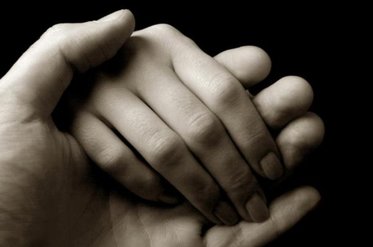 Hey everyone! Tasha here. I want to share a little bit about a subject that means a lot to me, the power of the sense of touch. Being touched and touching someone else are fundamental modes of human interaction. "From a warm handshake or sympathetic hug to a congratulatory pat on the back, we have developed complex languages, cultures, and emotional expression through physical contact. But in a tech-saturated world, non-sexual human touch is in danger of becoming rare, if not obsolete. Despite the benefits of digital advancement, it is vital to preserve human touch in order for us truly to thrive. Physical touch is the foundational element of human development and culture. The growing preoccupation with digital media versus personal physical contact, combined with the social and legal restrictions over physical contact in our schools and workplaces, may unintentionally affect these factors negatively. To foster a safe social environment in a climate of mediated communication, we should intentionally hold on to physical touch." "There is a biological need for touch, an actual hunger for touch that can be met only in contact with another human being. This was first discovered during the nineteenth century, when children who had been abandoned at birth and transferred to foundling homes died by the thousands. They literally wasted away, despite the fact that they were fed, kept clean, and protected from danger. The condition, known as marasmus (from the Greek, meaning "wasting away"), claimed the lives of nearly 100 percent of the infants under the age of one in U.S. foundling hospitals as late as 1920. What these children lacked was physical contact. Infants raised in their own homes are normally cradled and fed at their mothers' breasts, but these foundlings weren't. When this connection between life and touch was realized, doctors and nurses in many institutions cooperated in a plan to supply "mothering touch" for these children. It consisted of holding, stroking, speaking to the infant, and allowing significant periods of cuddling the child, especially at mealtimes. The results were dramatic and immediate. Infant mortality rates dropped within one year of adopting these touching practices, Despite the lessons we have learned about the necessity for touch, many child-rearing practices that discourage it endure today. The lack of sufficient touch has far-reaching effects on our development and shows itself in problematic ways when we reach maturity." Some people are very sensitive or ticklish or you may know someone who just 'doesn't like to be touched.' I have had several clients come in with those concerns. Massage is safe touch with very clear boundaries so those same people who 'didn't want to be touched' respond very well and feel very comfortable with massage almost every time. Out of all of our senses, touch is the only one we literally CAN'T LIVE without. Massage Therapy offers an environment to receive healthy, safe, healing touch. Everyone young or old, male or female can benefit from incorporating more touch into their lives. Schedule a massage to make sure you are getting enough of the healing power of touch. Massage makes a big difference for me. I hope it can do the same for you. Have a great day! Tasha Ouderkirk, LMT 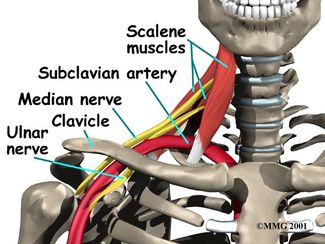 Hey Everyone, This is Paul and I wanted to write about a problem today that many people can have off and on throughout their life, namely, pain or numbness and tingling down one or both of the arms. Now this can happen for a couple different reasons but both of the reasons come down to muscles that have gotten too tight, inflexible, and most likely have knots or trigger points. The first way that the muscles can cause pain or numbness down the arm is by getting tight and causing what we call Thoracic Outlet Syndrome. Thoracic Outlet Syndrome occurs when the muscles get tight enough to compress the blood vessels or nerves passing through the neck to the arm. This can happen in three different areas: 1) between a couple of the muscles of the neck that we call the scalenes; 2) between the clavicle and the first rib; and 3) by the muscle pectoralis minor which is located in the front of the upper chest. 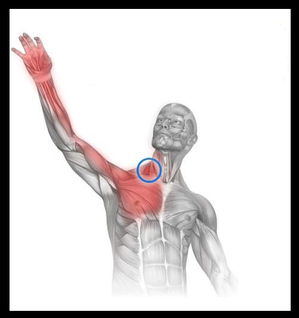 The second way that muscles cause pain and numbness is by knots or trigger points in specific muscles causing pain down the arm and sometimes into the fingers. The big offenders are the Scalenes which cause pain down the outside of the arm and into the fingers and hand. Pectoralis Minor causes pain down the inside of the arm and into the pinky, ring, and middle fingers. Serratus Anterior can cause pain down the inside of the arm and into the pinky and ring fingers. The Latissimus Dorsi muscle, the "lats," also has a similar pain pattern along the inside of the arm and into the pinky and ring fingers. The pain from these muscles is coming directly from the muscles themselves and not because of a compression of the nerves or blood vessels. Because of this, working them directly can be very effective in reducing or eliminating pain. Sometimes it can be a little difficult to tell if the pain is coming directly from the muscle or if the muscle is causing a compression of the nerves or blood vessels. This is why surgery is not the best way to deal with these types of problems. In fact, it is often misdiagnosed and symptoms persist after about 80% of surgeries performed for this type of problem. Instead, Massage is a Much Better Option! With Massage we would take a two step approach. First, we would have you come in for a massage to work through all of the muscles related to the problem. Second after getting massage we will teach you specific stretches that will help to keep the muscles a little more loose and not so tense. This may seem simple and basic but it actually works very well for most people. If you have any questions leave a comment down below. If you are having trouble with these types of problems give us a call, send us a text, or just go ahead and make an appointment online and we will do what we can to get you feeling better! Paul Ouderkirk LMT Hey Guys! Tasha here. Lately I have been noticing that a lot of people I see have stiff jaws! Let's talk about why and what you can do about it.
The temporomandibular (tem-puh-roe-mun-DIB-u-lur) joint is the joint that connects your jaw to your skull. These joints allow the jaw to open and close, chew, speak, and swallow. When this joint is injured or damaged, it can lead to a localized pain disorder called TMJD. Research has shown that some of the attributing factors can be grinding and clenching of the teeth, postural imbalances, arthritis, excessive gum chewing, emotional trauma and stress, whiplash, prolonged dental procedures, and facial trauma or sports injuries. Symptoms can include radiating pain in the face, jaw, neck, shoulders or ears, jaw muscle stiffness, limited movement or locking of the jaw, clicking, popping or grating in the jaw joint, headaches, abnormal bite/alignment, neck and shoulder pain, and swelling on the side of the face. TMJD often responds to remedies including MASSAGE, gentle stretches of the jaw and neck, stress reduction and relaxation. In most cases, the pain and discomfort associated with TMJD is temporary and can be relieved with self-managed care and nonsurgical treatments. I have worked on several clients with tension and pain like this and almost every time it is gone by the end of the massage. I have used massage modalities such as trigger point therapy, cranial sacral therapy or structural body work on the muscles that can put pressure and tension in this area and had amazing results. I LOVE MASSAGE! I feel so privileged to have been a part of the miracle of the healing process that massage can create for an individual. I have also been on the receiving end and it has changed my life. I hope it can do the same for you. Have a great day! Tasha Ouderkirk, LMT Hey guys! Tasha here. Today I want to talk about my favorite technique to use to ERASE headaches: Trigger Point Therapy!
90% of headaches are muscle tension related! The muscles in the neck and shoulder area commonly contain trigger points. Referred pain from these trigger points bring clients in for massage more often than for any other problem! Trigger Points are extremely common and become a painful part of nearly everyone's life at one time or another. Symptoms include but are not limited to:
Several muscles can be involved and all should be addressed during the session. Most clients experience headaches of one type or another and incorporating Trigger Point Therapy into the massage session will bring about more relief of symptoms and longer lasting results. I have struggled with headaches almost all of my life and discovering massage therapy was like finding a miracle! Massage has given me longer lasting relief from headaches and migraines than anything else. Now, as long as I get regular massage, my headaches are almost non-existent! Massage helps me live a more pain free life. I hope it can do the same for you. Have a great day! Tasha Ouderkirk, LMT Hey guys! Tasha here. I've been thinking about what topic to write about over the last few weeks and Somatic Emotional Releases (SER's) are what kept coming to my mind. So, here we go!
"Soul and body react sympathetically upon each other; a change in the state of the soul produces a change in the shape of the body and conversely, a change in the shape of the body produces a change in the state of the soul." -Aristotle Have you ever noticed the difference between the way someone who is happy holds their body compared to someone who is sad? or angry? or scared? Emotions and trauma can literally change us. Research by Dr. John Upledger, who developed Cranial Sacral Therapy, discovered that "the body often holds on to emotional energy, triggered by physiological, psychological, emotional or spiritual trauma. Although a body can initially adapt to the presence of this 'energy cyst', eventually the body weakens or tires of this accommodation and can develop symptoms of pain, dysfunction or emotional stress in response." "All negative emotional expressions are accompanied by a shortening of flexor muscles. The energy in a chronically flexed body has to work just to hold it up; the body continuously has to add energy to that body to keep it going. Such chronic flexion gives a feeling of tiredness and depression." -Moshe Feldenkrais As the body changes through massage, it may trigger the body to release these emotions it has been holding onto. In the world of bodywork, we call that a Somatic Emotional Release. This process requires sensitivity and expertise on the part of the therapist and a positive attitude and trust from the client. The client may experience an SER in the form of crying, laughter, anger, sadness, grief, or any other emotion during or after the session. I have been privileged enough to be able to help many of my clients let go of negative emotions and begin to heal. I am committed to creating a safe and comfortable environment in every massage that can allow for this change to happen if needed. Massage Therapy has helped me to be able to let go and heal from emotional pain I didn't even realize I had. It has lifted the stress I was carrying. I hope it can do the same for you. Have a great day! Tasha Ouderkirk, LMT Another thing that can really help is float therapy. We are big fans of float therapy. If you are interested in trying it out we recommend Body Balance. From our research into floating we can say that they offer the best float available in Utah. Hey guys! Tasha here. Welcome to our website! We are so excited to share our world of massage, health and wellness with you.
I thought we should start off with a little bit of information about the basics of the body and what happens to the muscles to make you feel discomfort or pain in the first place. That's right! It's not a mystery! Ida Rolf, the creator of Rolfing, (the beginning and inspiration of one of my personal favorite styles of massage, structural bodywork) once said: "More movement is more life." The muscles of your body are designed to move in specific directions and perform certain actions. When we have motions and activities that we do every day, or several times a day, we are constantly using the same muscles over and over. "That constant tensional force in a muscle pulls on bones and structures. As a result body segments get pulled out of correct posture. Poor posture and constant tension cause muscles to become 'loaded'. This means that they begin playing the structural role of bones, providing structure and support for the area and the rest of the body. Eventually these muscles become fatigued from overuse and other muscles become weak from disuse. The nervous system functions in overdrive and a cycle of pain occurs, leading to musculoskeletal dysfunction."-injury massage, Steiner Education Group. As a massage therapist of about five years now, I have worked with hundreds of clients at various stages of muscle and bone dysfunction. Some from overuse, some from disuse. Using bodywork and information from the client I have identified specific muscles and structures involved in the dysfunction, and been able to eliminate pain. Typically, I apply specific deeper techniques at the site of the pain and the supporting areas. The tissues begin to soften and heal and the structures return to optimal form. Posture improves. I have found over the years that as a client's posture and ability for movement is enhanced, pain decreases and often disappears. Massage has brought me joy as it has eased so much of the personal pain I have had with my own body and even more as I have been able to be a part of using these skills to help many others with this work. Massage Therapy has helped me to understand my body better and gave me hope that life doesn't need to be so painful. I hope it can do the same for you. Have a great day! -Tasha Ouderkirk, LMT |
Archives
May 2023
CategoriesNothing on this blog is to substitute for proper medical advice from your doctor and is not intended to diagnose or cure any disease. Always seek the advice of a qualified medical physician if you have any questions about a specific diagnosis or disease
|
HoursMonday-Friday
By appointment |
Telephone |
|
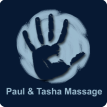

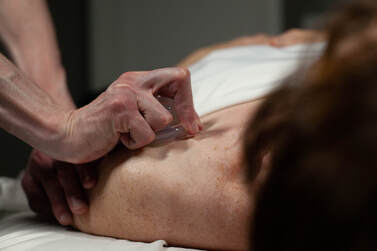
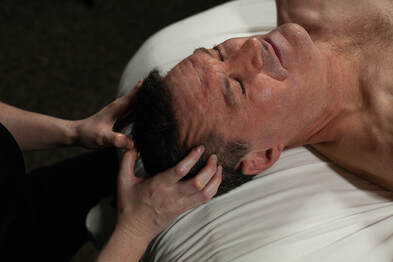
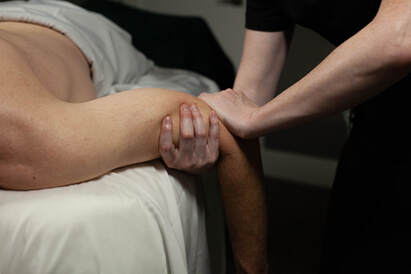
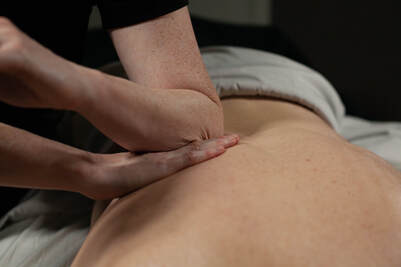
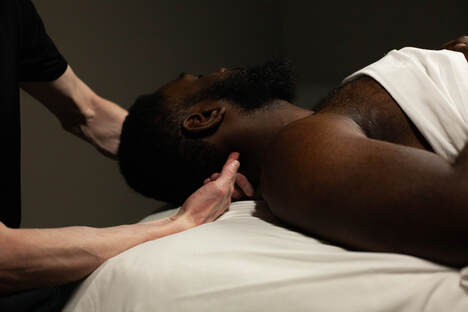

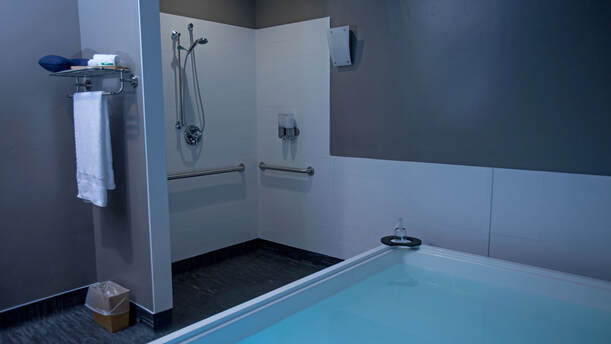
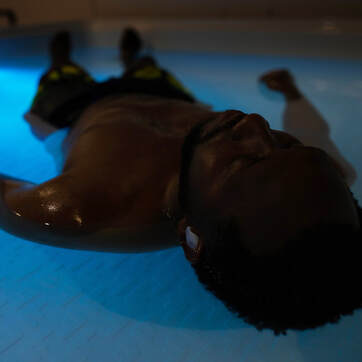
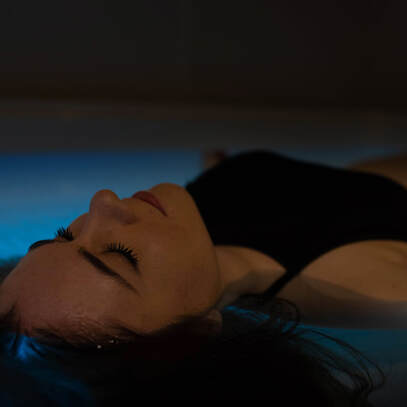
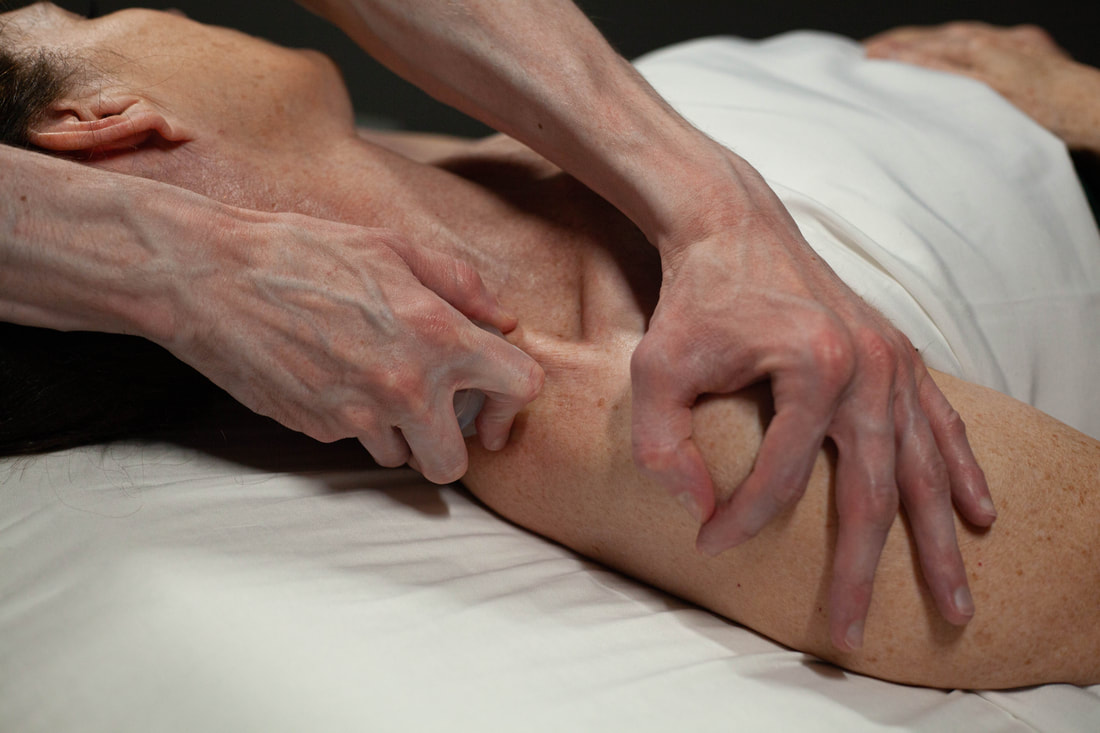


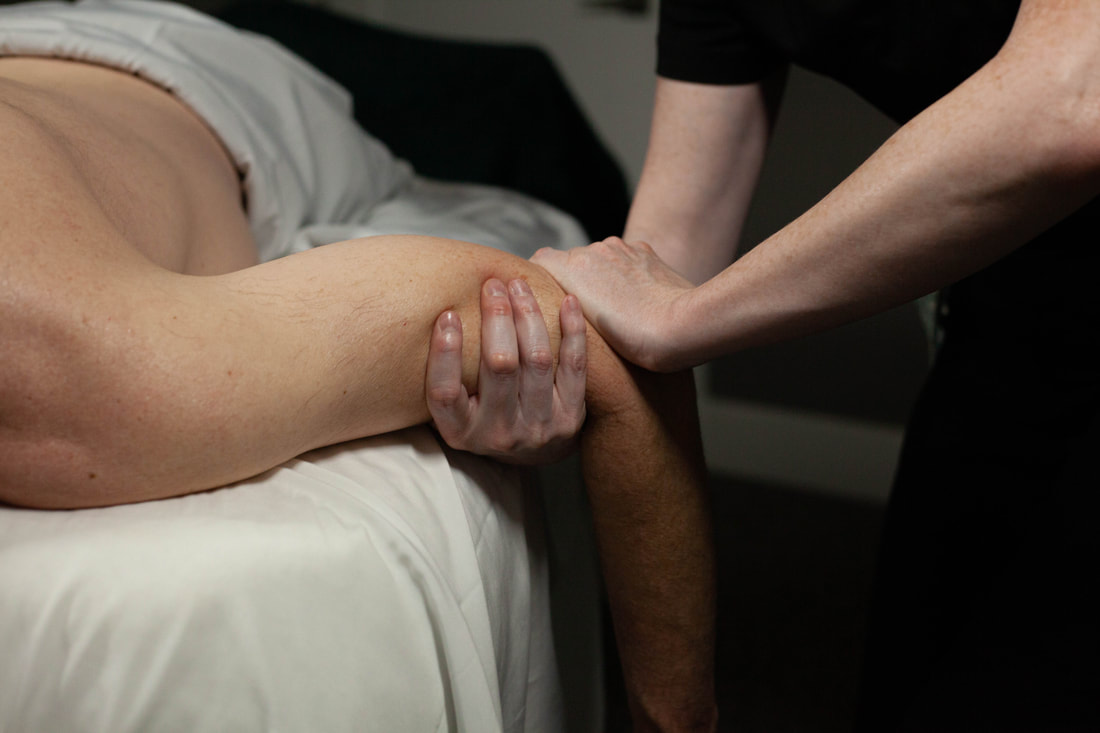
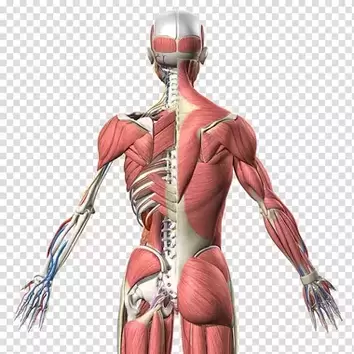
 RSS Feed
RSS Feed